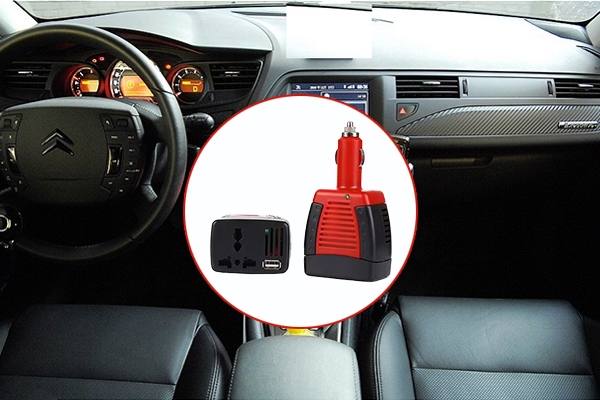A car inverter is an electronic device that converts direct current (DC) power from a vehicle's battery into alternating current (AC) power, allowing users to run household appliances and electronic devices in their cars. The primary purpose of a car inverter is to provide a source of AC power for devices that typically operate on standard household electrical outlets. These inverters are equipped with one or more AC outlets and are commonly used for charging laptops, smartphones, cameras, and other small electronic devices while on the go.
Car inverters are versatile tools for road trips, camping, and emergency situations, enabling users to power devices that would otherwise be challenging to operate without access to conventional power sources. They come in various power capacities, measured in watts, to accommodate different devices and appliances. Some advanced models also include USB ports for charging devices directly, making them convenient for a wide range of applications where portable power is essential. Especially if you are traveling or camping with your family. However, there are few models that can provide domestic power for household appliances. It's crucial to ensure that the inverter's capacity matches the power requirements of the devices being used to prevent overloading the system.

We not only know how to choose a car inverter, using a car inverter correctly is crucial to ensure both the safety of your vehicle's electrical system and the efficient operation of your devices. In this guide, we will explore the essential tips and best practices for using a car inverter effectively.
- Understanding Your Car Inverter. Before diving into the correct usage of a car inverter, it's essential to understand its specifications and limitations. Check the power rating of your inverter, usually measured in watts (W), and ensure it meets the requirements of the devices you plan to power. Exceeding the inverter's capacity can lead to overheating and potential damage.
- Connection and Installation. Proper installation is the first step in using a car inverter correctly. Follow these steps for a secure connection: A. Locate a suitable power source: Identify the appropriate power source in your vehicle, usually the cigarette lighter socket or directly connecting to the battery. B. Use the right cables: Use high-quality cables that can handle the inverter's power capacity without voltage drop or resistance issues. C. Grounding: If connecting directly to the battery, ensure proper grounding to prevent electrical issues.
- Start the Vehicle. To avoid draining your car's battery, start the vehicle's engine before using the inverter. Running the engine will provide a continuous power source and prevent the battery from discharging excessively.
- Choose the Right Devices. Before connecting any devices, check their power requirements and compatibility with the inverter. Avoid connecting devices that exceed the inverter's power rating, as this could lead to malfunction or damage.
- Power Up Gradually. When using the inverter for the first time or powering multiple devices simultaneously, start with low-power devices and gradually add more. This approach helps prevent sudden power surges that could overload the inverter.
- Turn Off When not in Use. To conserve energy and prevent unnecessary strain on your vehicle's battery, turn off the inverter when you're not using it. Leaving the inverter on with no connected devices can still draw power from the battery.
- Proper Ventilation. Car inverters generate heat during operation, so it's crucial to provide proper ventilation. Avoid placing the inverter in enclosed spaces or covering it, as this can lead to overheating and reduced efficiency.
- Monitor Battery Voltage. Invest in an inverter with a built-in voltage monitor or use a separate voltmeter to keep track of your vehicle's battery voltage. If the voltage drops too low, it may indicate excessive strain on the battery, and you should consider reducing the load on the inverter.
A car inverter is a convenient tool for powering electronic devices on the road, but using it correctly is essential for safety and optimal performance. By following these guidelines on installation, connection, and operation, you can ensure a smooth and trouble-free experience with your car inverter while extending the life of your vehicle's electrical system. Electrocution or fire accidents can also occur if you use your car inverter improperly. Therefore, choose a reliable car power inverter with all-round protection for your car. In Inverter.com, there are a variety of choices.
